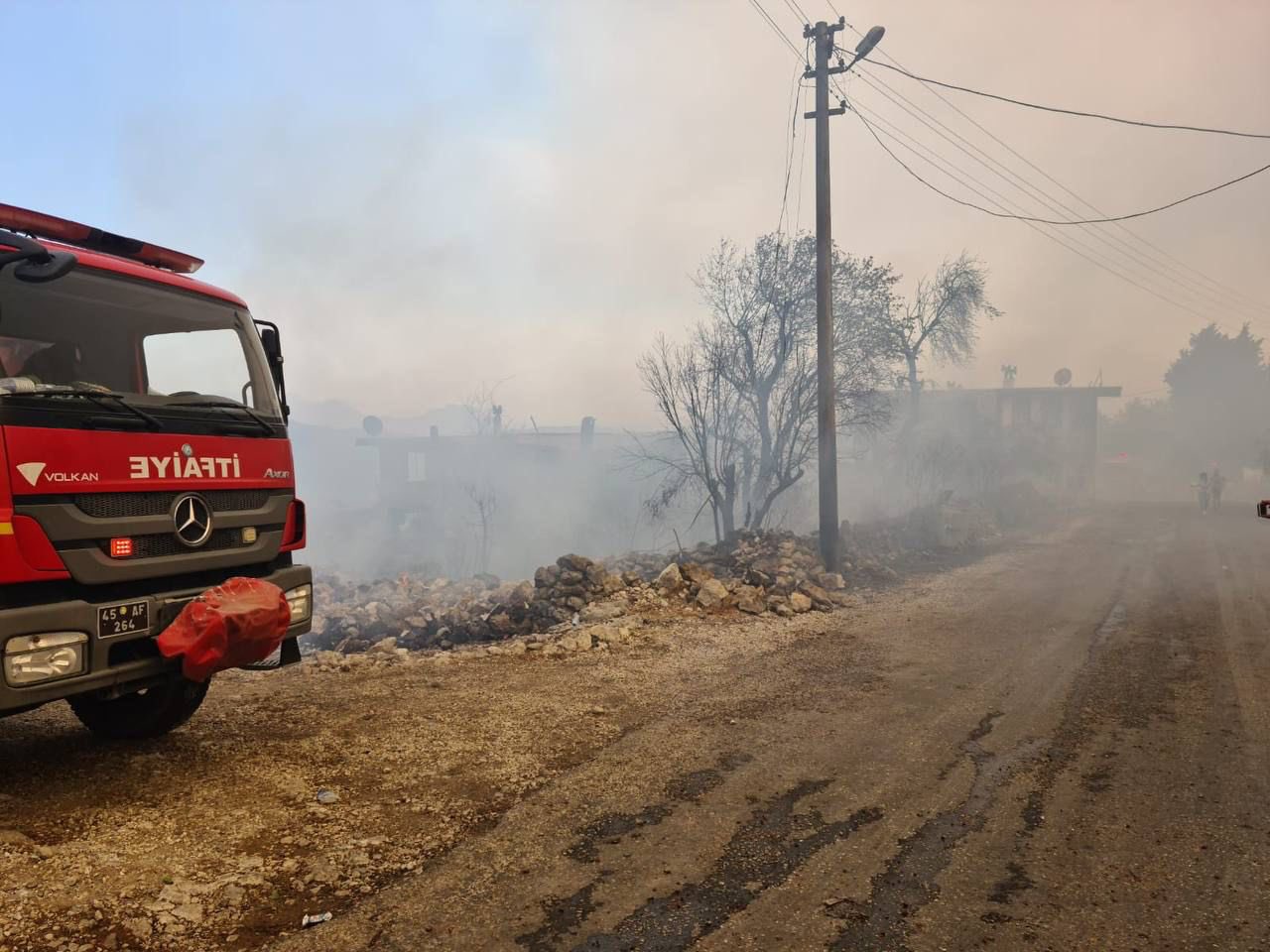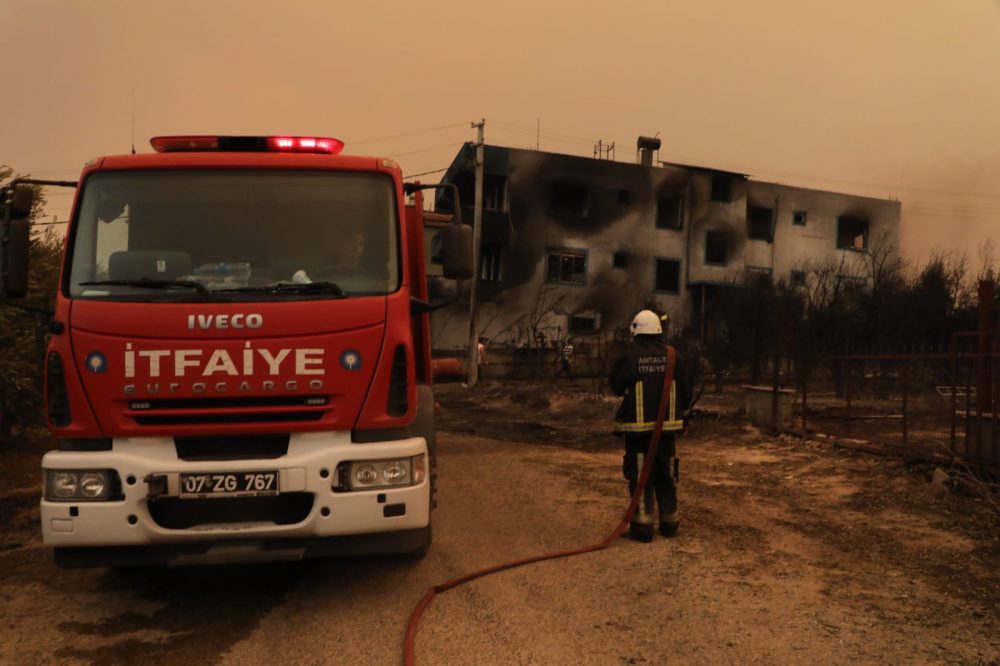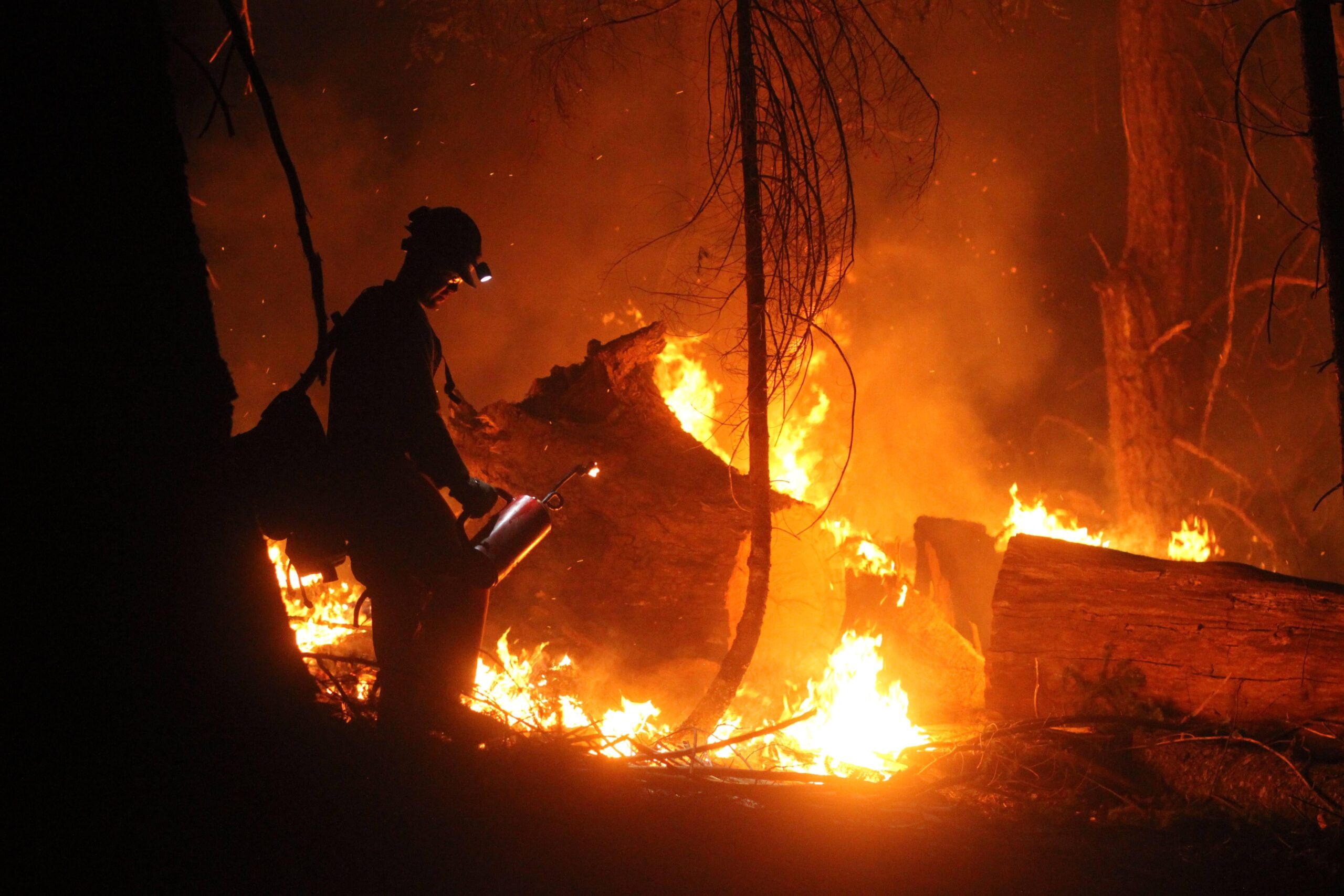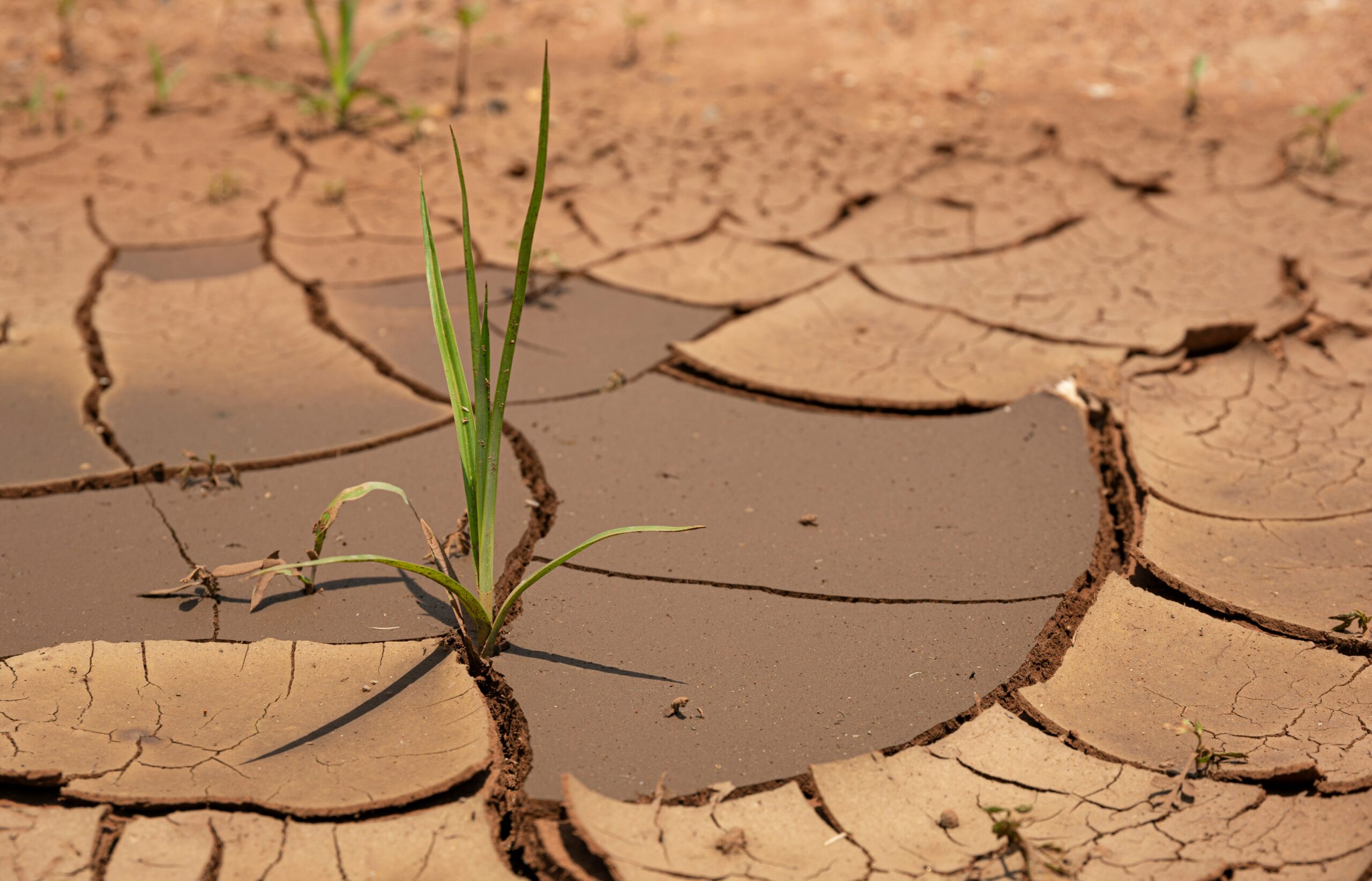

Overview
In 2021, several countries saw record wildfire seasons.
Most stemmed from the extreme and often record-breaking heat and associated drought across much of the region over the past several years. German broadcaster Deustche Welle wrote on Aug. 5, “The month of July was the second-hottest ever recorded in Europe (and the third hottest globally). The south of the continent has been the focus of this extreme heat, with temperatures in Greece this week expected to peak at 47 degrees Celsius (117 degrees Fahrenheit). Greece and neighboring Turkey are in the midst of a heatwave that could be the worst in 30 years — invoking memories of the nightmarish 1987 fire season that claimed more than 1,500 victims in Greece alone.”
As of Oct. 18, the European Forest Fire Information System (EFFIS) estimates that within European Union countries, between 1.2 million acres and 1.6 million acres had burned. In the broader area that EFFIS covers, it estimated between 2.7 million acres and 3.6 million acres burned.
(Photo credit: Antalya Metropolitan Municipality via Twitter)
Russia
Wildfires in Russia’s north raged beginning in June 2021, with smoke is so intense that for the first time ever, it reached the North Pole. There were so many fires that officials had to focus only on the biggest ones and/or ones likely to do the most harm. At the height of the fires, Siberia’s fires alone were bigger than the rest of the world’s fires combined. As of mid-September, almost 46 million acres had burned, setting Russia’s all-time record for wildfires – 18.16 million hectares compared to 18.11 million hectares in 2012 – and fires were still burning. According to Greenpeace, 9 out of 10 fires were human-caused (campfires, coal trains and electrical lines) and the remainder were caused by lightning.
Turkey
Immense forest fires began burning around July 28 and the majority were extinguished within two weeks but not before causing enormous damage. Nearly 225 fires in 47 provinces consumed the country, leading to mass evacuations and major destruction. More than 656 square miles (1,700 square kilometers) were burned, destroying forests, homes, agricultural land and livestock. Centuries-old olive groves were decimated. Nine people were killed by the fires, including two firefighters. Social media reports laid the blame on arson, specifically citing the terrorist group “Children of the Fire Initiative,” which is linked to Kurdistan Workers’ Party (PKK). “The PKK has a long history of burning Turkey’s forests as a method of ’vengeance’ from the Turkish state and causing civilian deaths and environmental destruction in the process.”
Greece
A wildfire on the northern half of Evia (an island 30 miles NE of Athens) began on July 21 and burned for more than 20 days. The fire burned during an extreme heatwave, with temperatures higher than 100 degrees Celsius most days. At least 120,000 acres of forest burned, two people were killed and 20 injured. The government created a Ministry of Climate Crisis and Civil Protection in response to the fires, which the prime minister blamed on climate change. The damage cost the country $1.6 billion (1.2 billion euros) or 0.6% of GDP, which makes them eligible for the European Union’s Solidarity Fund. The fund helps members states who suffer damages after natural disasters with losses of 0.6% of the GDP (which applies in Greece’s case) or 3 billion euros.
Italy
Nearly 45,000 wildfires had burned across Italy by mid-August including on Sardinia and Sicily. Other hard-hit areas were Calabria, Lazio, Basilicata, Campania and Apulia. In Sardinia, the fires destroyed at least 50,000 acres across a 25-mile strip of land. Homes, animals, land and farms all fell to the fire. Also lost was the village of Cuglieri’s thousand-year-old olive tree. In early August, “Roberto Cingolani, minister for ecological transition, told parliament that 57.4% of Italy’s recent wildfires were caused by arson, and 13.7% the result of unintentional human action. ‘More than 70% of the fires in Italy are our responsibility,’ he said. ‘Less than 2% are caused naturally, for example, by a lightning strike. For 4.4%, the cause is undetermined, and 22% are unclassifiable situations in which it is difficult to know what triggered the fire.’”
Lebanon
A series of fires broke out across Lebanon beginning on July 28. They continued throughout August, including some in the northern part of the country that spread to Syria. High temperatures in late August led to even more fires, including one in Sfireh that surrounded olive groves. At least one firefighter was killed. On July 14, the United Nations issued a warning that Lebanon was on the brink of a water crisis because of the economy. There were fears that this could impact the ability of communities and residents to respond to fires. The Qobayat area, home to one of the most beautiful forests in Lebanon, was badly damaged. Home to oak, pine and cedar trees, the government said tens of thousands of trees were destroyed as the fire spread 4 miles long by 1.2 miles across.
Long-term support needs will include rehousing, income recovery, agricultural needs and additional preparedness support to vulnerable populations. Due to the impact of the losses, mental health support and counseling services will be a significant need.
Funders should consider the following options to support affected communities now and to reduce the impact of future fires:
Award loans and grants for rebuilding damaged homes and businesses.
Support local agencies on the ground throughout the disaster life cycle, especially those working with marginalized communities.
Those in already precarious situations — such as the elderly, sick, undocumented and mixed-status families and people living in poverty — may find their circumstances worsened in the face of disaster. Mental health providers, food banks and organizations working with children or the elderly, for example, must have plans in place to mitigate the disaster’s impacts.
Fund drought mitigation efforts.
These may focus on sustainable agriculture, water conservation or even land use. According to the National Drought Mitigation Center, an emerging area for research is land-use patterns that “maintain the integrity of watersheds and that have a smaller paved footprint,” which can help build resilience to drought.
Invest in public awareness, educational campaigns and information dissemination on fire prevention and promising wildfire and drought mitigation practices.
Simple efforts such as clearing flammable materials from 100 feet around the house may help prevent property damage. Fires can also be started by misuse of equipment, such as grills, that can be averted with proper knowledge.
Assist businesses in developing business continuity and disaster recovery plans to reduce economic impact.
These plans should include contingencies for displaced workers, back up of data and alternate facilities for continuing operations in the event of property damage.

The Center for Disaster Philanthropy (CDP) has a Global Recovery Fund that provides an opportunity for donors to meet the ongoing and ever-expanding challenges presented by global crises.
Contact CDP
Philanthropic contributions
If you would like to make a donation to the CDP Global Recovery Fund, please contact development.
Recovery updates
If you are a responding NGO or a donor, please send updates on how you are working on recovery from this disaster to tanya.gulliver-garcia@disasterphilanthropy.org.
We welcome the republication of our content. Please credit the Center for Disaster Philanthropy.
Donor recommendations
If you are a donor looking for recommendations on how to support recovery from this disaster, please email regine.webster@disasterphilanthropy.org.
Philanthropic and government support
The Center for Disaster Philanthropy provided a $135,409 grant in November 2021 to Catholic Relief Services (CRS). In partnership with Caritas Hellas (CH), the national Caritas in Greece, CRS will provide social services and psychosocial support to 2,000 people affected by the recent wildfires. CRS and CH will also partner with community-based associations to implement community-led recovery activities, and train them in disaster risk reduction and crisis management to mitigate future risks and benefit the broader community.
There are a wide range of government funding programs that will support fire response. Not all of them have been finalized yet.
For example, in Greece, the prime minister approved the launch of a $580 million (€500 million) aid package for Evia and Attica and pledged to reforest the destroyed areas.
In Turkey, the government immediately sent $2.7 million (TL 23.5 million) to the impacted areas to support survivors. Turkish Philanthropy Funds established a wildfire relief fund that will support response, recovery and preparedness for future years. They collected nearly $2 million on their first day.
Resources

Wildfires
Wildfires devastate homes, livelihoods and communities of people worldwide, making them one of the most destructive types of disasters. While climate change fuels the frequency and intensity of wildfires, wildfires themselves fuel climate change, making them uniquely damaging to the planet.

Drought
Experts describe drought as a slow-moving global catastrophe. Recent years have seen some of the most widespread and damaging droughts in recorded history, driven by climate change.

Is your community prepared for a disaster?
Explore the Disaster Playbook